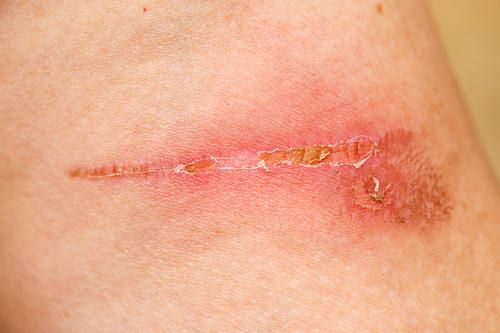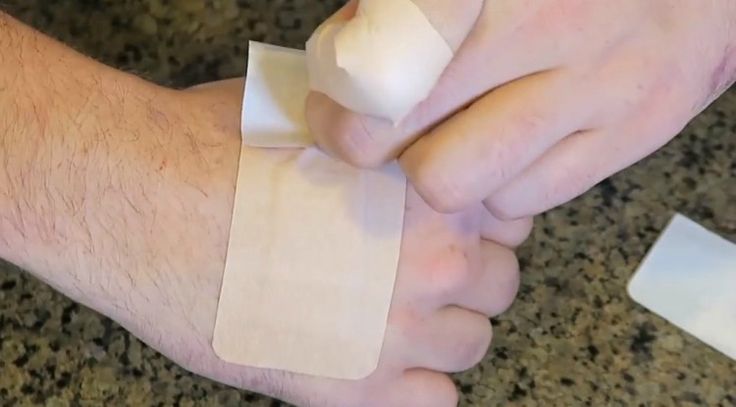Wound scab is a natural process of self-healing of the human body, but there are often cognitive misunderstandings in the nursing process. This article will systematically analyze whether iodine tincture is needed after scab from the perspectives of wound healing mechanism, moist healing theory and functional dressing application, and provide nursing suggestions based on clinical practice.

Wound scab and healing stage :
The scab is essentially a protective hard shell formed by wound exudate, fibrin, platelets, and other components, marking the initial closure of the epidermis. At this time, the wound state needs to be observed: if the scab is complete, there is no redness, swelling, or exudate at the edge, and it is painless to touch, it means that the healing has entered the late stage, the skin barrier function has basically recovered, and no additional disinfection is required. However, if there is abnormal secretion, pus under the scab, or the scab is loose at the scab site, you need to be alert to the risk of secondary infection.
Iodine after the scab forms?
As a broad-spectrum disinfectant, iodine tincture should be used in combination with the actual situation of the wound. Disinfection should be continued when the following conditions occur after scabbing: purulent exudate under the scab, increased temperature of the skin around the scab accompanied by redness and swelling, and fluctuation or increased pain when pressing the scab. These symptoms indicate the possibility of deep infection or pus under the scab. Iodine tincture should be used to clean the skin around the scab, and the doctor should be consulted to assess whether debridement is needed. If the wound has formed a stable scab and there are no abnormal manifestations, excessive disinfection may destroy the integrity of the scab and increase the risk of infection.
Moist healing theory?
The traditional dry healing concept emphasizes wound drying and scabbing, but modern research has confirmed that a moist environment can accelerate the healing process. Moist healing promotes the growth of granulation tissue and epithelial cell migration by maintaining moderate local moisture in the wound, thereby avoiding secondary damage caused by scab formation. This theory is applicable to burns, pressure sores, postoperative incisions, and other scenarios. Its core lies in using functional products such as hydrocolloid dressings and foam dressings to maintain moderate moisture in the wound and promote cell proliferation and tissue remodeling. Clinical data show that the wound healing time using moist healing is 30%-50% shorter than that of traditional dry healing.
Synergistic effect of moist healing and functional dressings
Modern wound care advocates the concept of "moist healing", which is to promote the growth of granulation tissue and epithelial cell migration by maintaining a moderately moist environment in the wound. Functional dressings play a key role in this process:
Hydrocolloid dressing: creates low low-oxygen, slightly moist environment, accelerates healing, and reduces scab formation, suitable for superficial abrasions or postoperative incisions.
Alginate dressing: A highly absorbent material that manages exudate while releasing calcium ions to promote coagulation, suitable for moderate to severe exuding wounds.
Silver ion dressing: It achieves long-term antibacterial effect through the sustained release of silver ions and is suitable for chronic wounds with a higher risk of infection.

Practical tips for daily care :
1. Check the scab area daily for redness, swelling, exudate, or odor, which are early signs of infection.
2 Do not forcibly tear off the scab after it forms, as it may cause secondary injury and scar hyperplasia.
3. Supplement protein (such as eggs and fish) to promote tissue repair and avoid spicy and irritating foods that trigger inflammatory responses.
4. Hydrocolloid dressings can be used for superficial abrasions to promote faster wound healing, while silver ion dressings are needed for antibacterial and healing effects on chronic wounds.
Observe the wound more after it has scabbed. If the wound heals well, there is no need for excessive disinfection. However, when there is a risk of infection, iodine tincture is still an effective tool. Combining the concept of moist healing with functional dressings can significantly improve the quality of healing. It is recommended to dynamically adjust the care plan according to the wound type, exudate and healing stage, and consult professional medical staff when necessary.
For more information on Innomed®Hydrocolloid Dressing, refer to the Previous Articles. If you have customized needs, you are welcome to contact us; You Wholeheartedly. At longterm medical, we transform this data by Innovating and Developing Products that Make Life easier for those who need loving care.
Editor: kiki Jia

 English
English عربى
عربى Español
Español русский
русский 中文简体
中文简体








